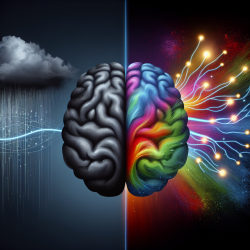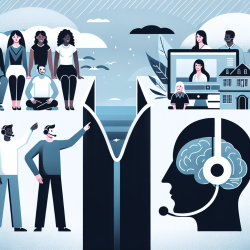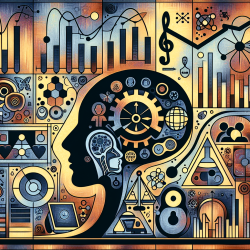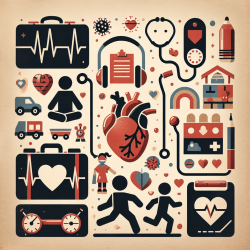Introduction
In the realm of speech-language pathology, understanding the intricate processes of poststroke language recovery is crucial for enhancing therapeutic interventions. The research article "What Is the Nature of Poststroke Language Recovery and Reorganization?" provides a comprehensive exploration of the anatomical and physiological changes that occur in the brain following a stroke. This blog aims to distill the key findings of the study and offer practical insights for practitioners seeking to refine their therapeutic approaches.
The Phases of Language Recovery
Poststroke language recovery unfolds in three overlapping phases: acute, subacute, and chronic. Each phase is characterized by distinct neural phenomena:
- Acute Phase: Occurring within the first two weeks post-stroke, this phase involves reperfusion of the infarcted tissue, crucial for restoring language function.
- Subacute Phase: Spanning up to six months, this phase is marked by the resolution of diaschisis, where previously suppressed brain regions regain functionality.
- Chronic Phase: Extending months to years after the stroke, this phase involves long-term reorganization and strengthening of neural networks.
Neuroimaging Insights
Advancements in neuroimaging have shed light on the dynamic changes occurring in the brain during recovery. The study highlights the role of functional magnetic resonance imaging (fMRI) in tracking changes in brain activation and connectivity. Key findings include:
- Reorganization of language functions often involves both hemispheres, with the left hemisphere playing a pivotal role in recovery.
- Changes in white matter connectivity and functional connectivity are crucial indicators of recovery progress.
- Effective rehabilitation can lead to increased activation in perilesional regions, supporting language recovery.
Practical Implications for Practitioners
For practitioners, these insights underscore the importance of data-driven approaches in therapy. Here are some actionable strategies:
- Utilize neuroimaging data to tailor interventions, focusing on enhancing connectivity in key brain regions.
- Incorporate exercises that promote neural plasticity, such as repetitive language tasks and cognitive exercises.
- Monitor progress through regular assessments, adjusting therapeutic strategies based on individual recovery patterns.
Encouraging Further Research
While significant progress has been made, the study emphasizes the need for continued research to unravel the complexities of language recovery. Practitioners are encouraged to engage in collaborative research efforts, contributing to a deeper understanding of the mechanisms underlying recovery.
To read the original research paper, please follow this link: What Is the Nature of Poststroke Language Recovery and Reorganization?










